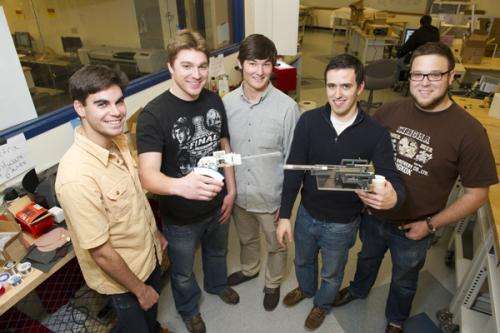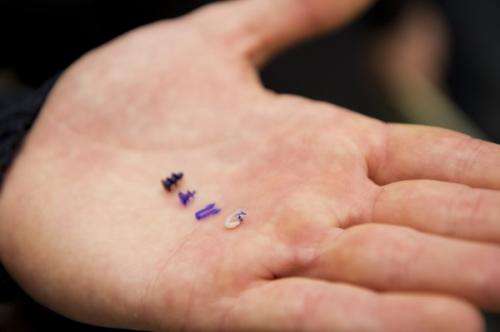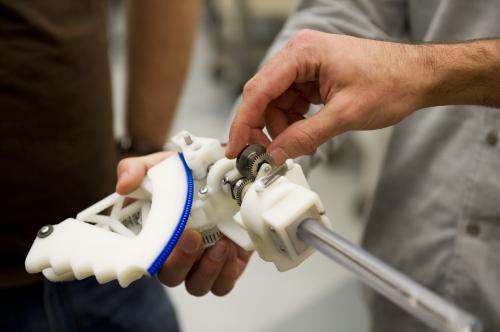Hernia repair, revolutionized

Each year, more than one million patients in the U.S. undergo hernia repair surgery, the most common form of which takes place in the abdomen. The injury presents itself as a weakness in the abdominal wall until ultimately the tissue gives way, leaving an open hole.
In the most effective form of surgery, the surgeon lays a piece of mesh over the hole and secures it in place with bio-absorbable fasteners. But the devices for delivering these fasteners are expensive, forcing some clinicians to choose alternative, perhaps less ideal methods.
Under the direction of engineering professor Jeffrey Ruberti, however, a team of students developed a reliable and cost-effective new device to secure the fasteners in place. The project was one of two winners in last semester's mechanical engineering Capstone competition.

While working on co-op last spring at a medical device company called MoMelan, team member Charles Sidoti met Northeastern alumnus Jeff Cerier. In February of 2011, Cerier and his business partners established High Road Medical, which is devoted to developing improved devices for current surgical and endoscopic procedures, with a focus on improving ease-of-use and lower per-procedure costs. Cerier and his team presented the Northeastern group with a straightforward challenge: to develop a device for High Road's unique fastener design.
Sidoti and his fellow student-researchers Joseph Aaron, Andrew Edgerly, Charles O'Connell, and David Stone, designed and constructed two reusable instruments, which they call the Tip Drive model and the Threaded Rotator model. The first uses both rotation and translation to introduce the fastener; the latter is based entirely on rotation. Each has its own set of pros and cons, the students explained, but they all agreed the Tip Drive is a more robust design.

Members of the group also met with a surgeon at Massachusetts General Hospital to get an insider perspective on the industry standard. "He said he hates all the devices on the market," said Aaron. "They feel flimsy and give no tactile feedback."
Currently, surgeons may think the fastener is properly aligned, but won't know for sure until they deploy it. If not properly aligned, fasteners can drop into the abdominal cavity, introducing more complications.
Therefore, in addition to simply designing a reliable device, members of the team decided to incorporate a feature that uses a novel force-amplification method to help surgeons during the procedure. The amplifier makes it possible for users to feel the fastener coming into contact with a surface.




















